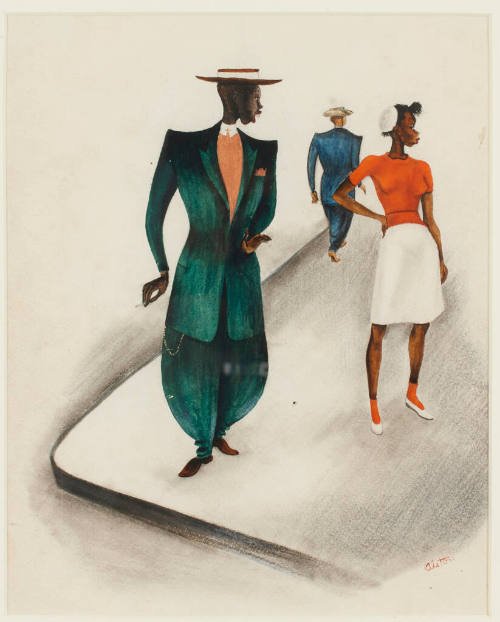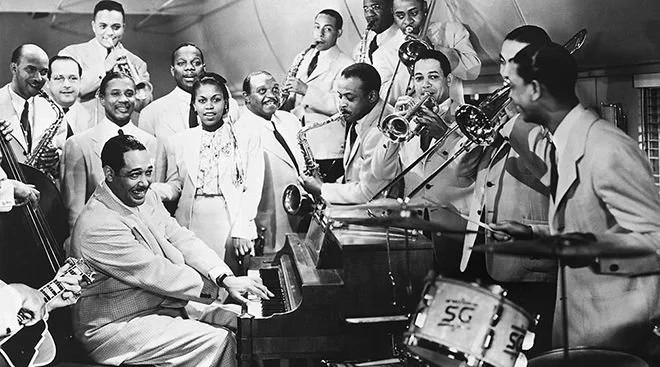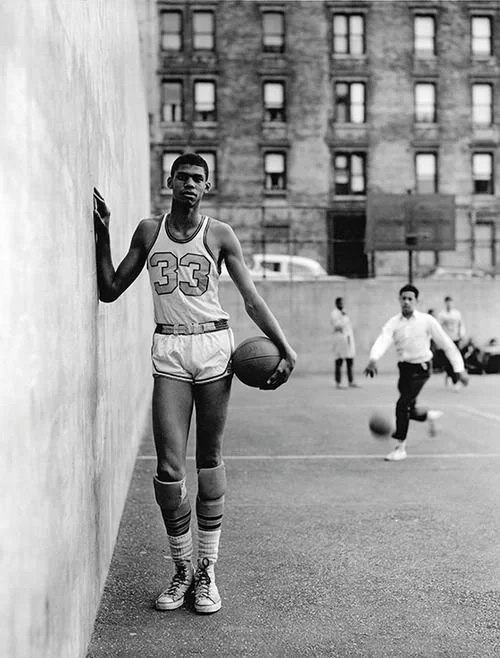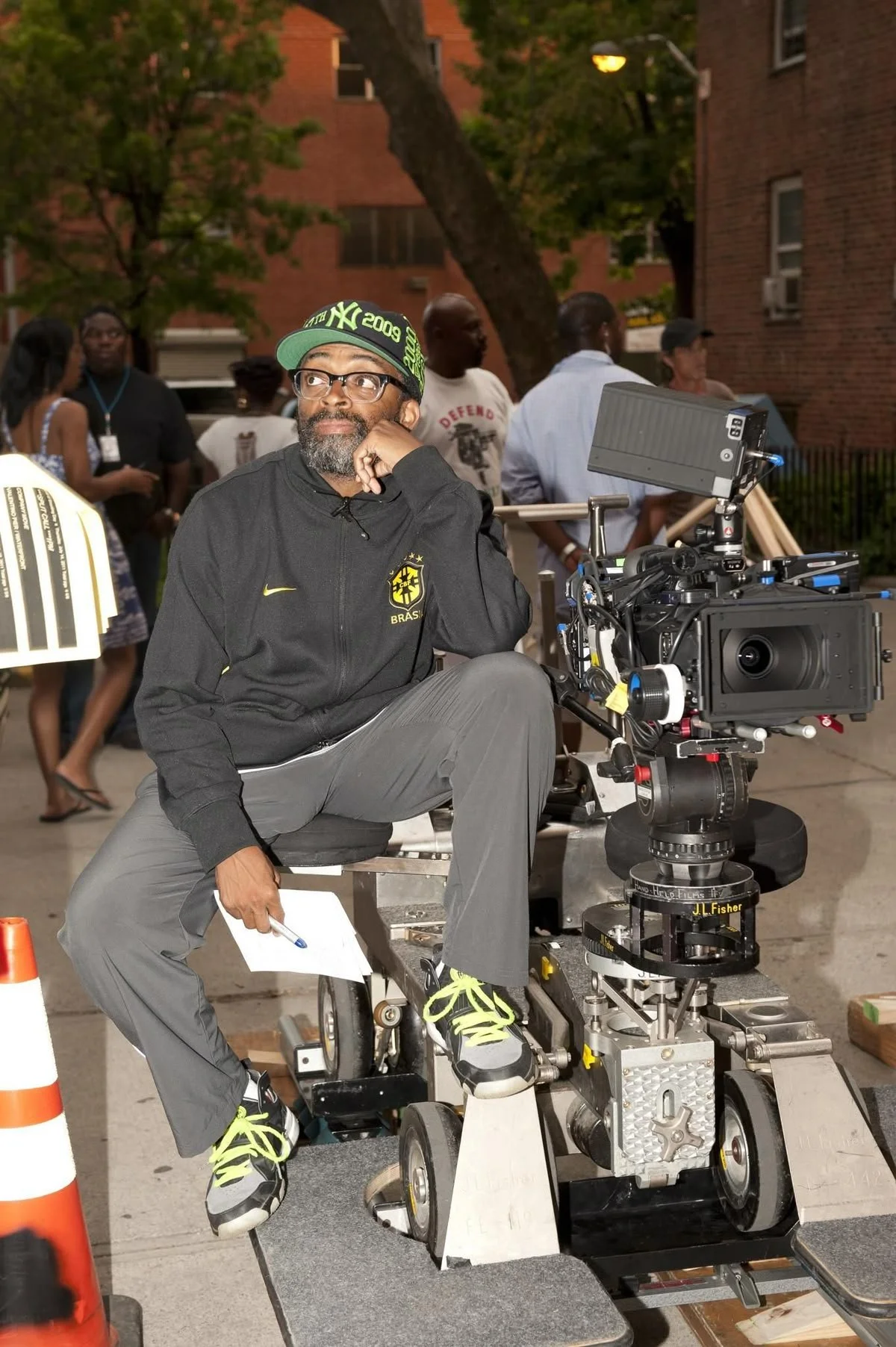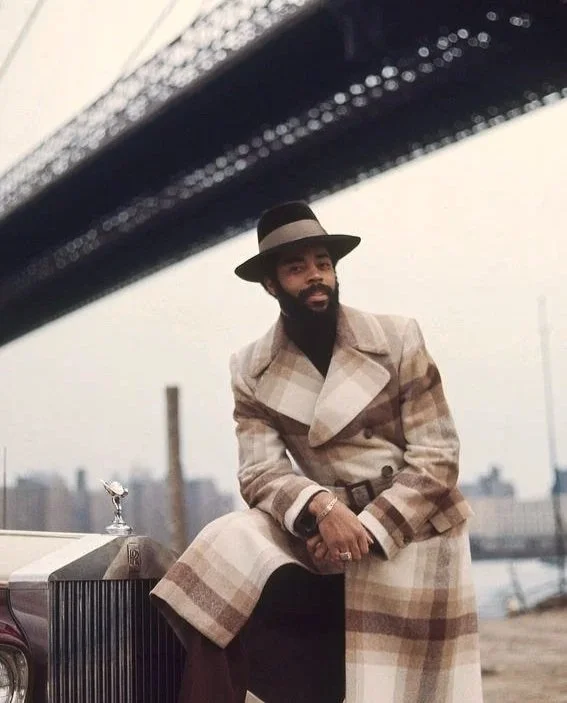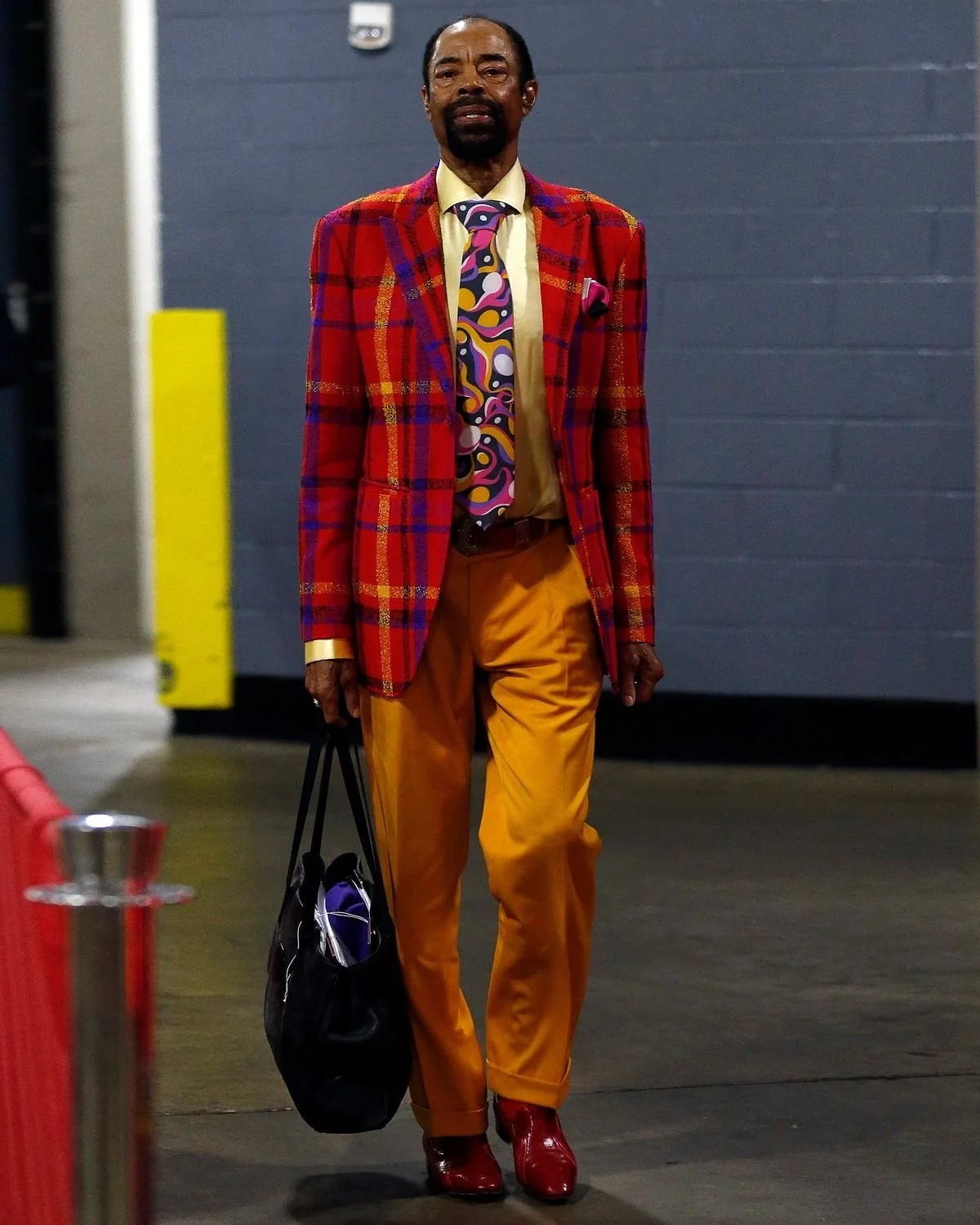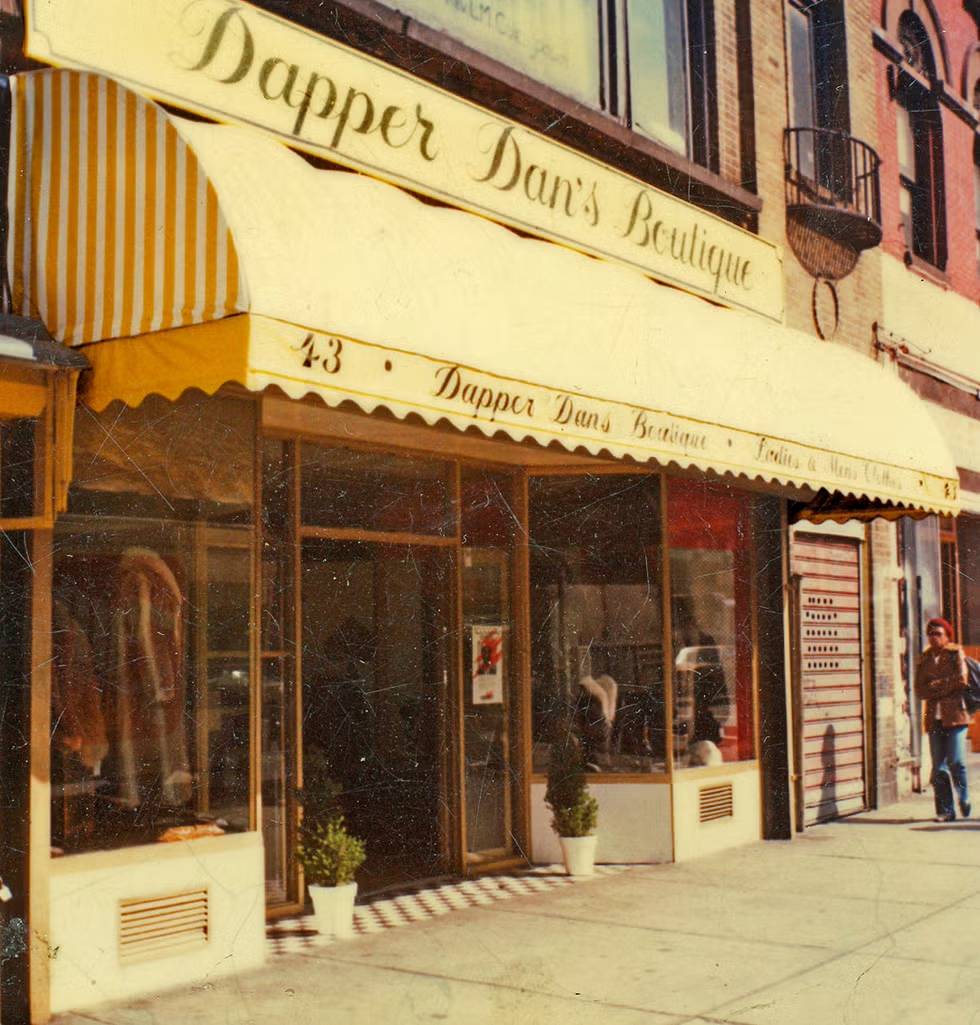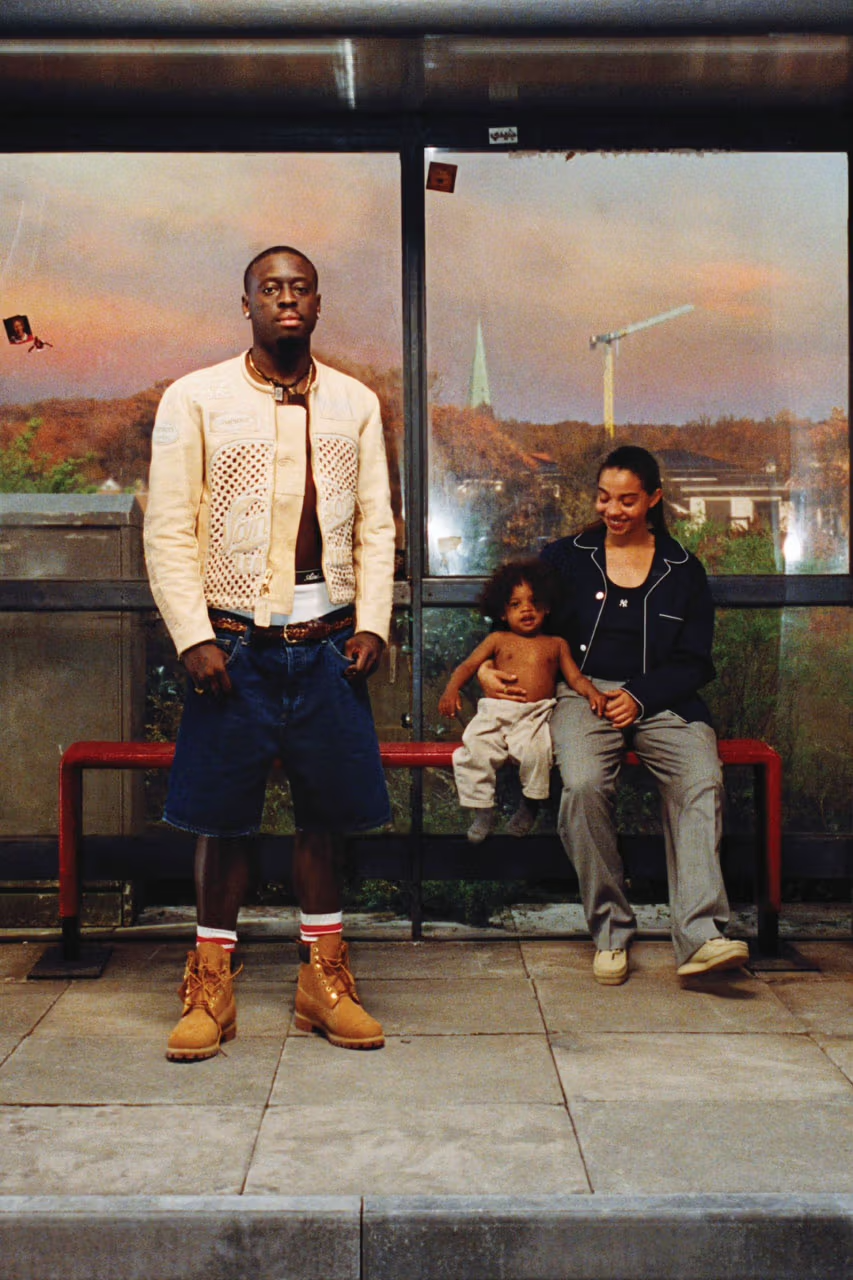Harlem in Motion: Uptown Funk
There’s a rhythm in Harlem, one that’s been looping for over a century, from the Harlem Renaissance to the Rucker Park sidelines, from Dapper Dan’s atelier. Harlem has always been a place where movement and style are inseparable. Sport bleeds into music, music bleeds into clothes, and those clothes tell the world who you are before you even speak.
Dapper Dan. Photo Courtesy of DapperDanOfHarlem.com.
The Renaissance Never Ended
Before basketball courts and boom boxes, Harlem was the epicenter of the 1920s cultural explosion. The Harlem Renaissance wasn’t only about art and poetry; it involved a dress code. Zoot suits, silk dresses, and brimmed hats weren’t mere garments; they were declarations of sophistication and defiance. That spirit of the Harlem Renaissance never left, as it just more commonly traded ballrooms for courts and playgrounds.
Charles Henry Alston, Zoot Suit. 1938-39.
Jazz artists from around the country relocated to New York City, helping shape the legacy of the Harlem Renaissance. Icons like Duke Ellington, Louis Armstrong, and Billie Holiday brought their unique sounds to the vibrant Harlem scene, turning it into a musical melting pot. Their performances in clubs like the Cotton Club and the Apollo Theater not only captivated audiences but also pushed jazz to new creative heights. This created a dynamic cultural exchange that fueled innovation and solidified Harlem as the heartbeat of American music and artistic expression.
Duke Ellington via Michael Orch Archives/Getty Images.
Rucker Park: Harlem’s Athletic Soul
If the Renaissance gave Harlem its cultural foundation, then Rucker Park gave it its athletic soul. Every summer, Rucker Park transforms into a theater of dreams. Every crossover, every dunk, every courtside outfit is part of the spectacle; it’s a live performance where street style meets street hustle.
In 1946, Holcombe Rucker, a Harlem educator and community activist, invented the first outdoor youth basketball league, a summer tournament that became legendary. What started as a tool for social change quickly grew into a proving ground for some of the greatest basketball talents, including Kareem Abdul-Jabbar, Wilt Chamberlain, Connie Hawkins, and Julius “Dr. J” Erving, who credits Rucker for shaping his revolutionary style.
Kareem Abdul-Jabbar of Rucker Park.
Rucker Park, at 55th Street and Frederick Douglass Boulevard, isn’t just a court; it’s a theater of dreams where every crossover, dunk, and courtside outfit is part of a live performance. It’s where street style meets street hustle, and where the energy that would one day spark And1 first took shape. The pro league launched by Bob McCullough and Freddie Crawford attracted Knicks stars and fashion icons, such as Walt “Clyde” Frazier and Willis Reed, helping to fuel the Knicks’ first NBA championship and cementing the court’s role as a cultural epicenter.
The park’s influence didn’t end with the athletes. Filmmaker Spike Lee, a lifelong Knicks fan and Harlem advocate, kept Rucker’s energy alive in popular culture. From Nike’s ads that blended streetball swagger with sneaker fame, to his own courtside presence that turned watching the game into its own performance. Through him, Rucker’s style, spirit, and storytelling reached audiences far beyond 155th Street.
Spike Lee on set for Red Hook Summer, 2012.
The Harlem Globetrotters
Before viral dunks and Instagram highlight reels, there were the Harlem Globetrotters. These athletes turned basketball into both an art form and a spectacle. Founded in 1926, they weren’t even from Harlem at all; the team was born in Chicago, but they adopted the name to tap into Harlem’s rising global reputation.
Harlem Globetrotters with coach Abe Saperstein.
In crisp uniforms with effortless cool, the Globetrotters brought a distinctly Harlem-coded swagger to arenas worldwide. They took the court like a stage, blending athletic excellence with performance, and in doing so, they exported Harlem’s mix of grit and grace to places that had never seen a Black player before. Berlin, Moscow, Tokyo, the Globetrotters were exactly what they named themselves to be. The Globetrotters showed the world what Harlem already knew: the game was never just a game.
The Fashion of the Game
Speaking of Clyde, Walt Frazier’s flamboyant suits and confident style made every post-game press conference feel like fashion week. His influence can be seen in today’s NBA tunnel walks through a legacy that traces directly back to Harlem’s courts and culture. Known for his sharp, tailored suits, mink coats, and bold accessories, Clyde turned every post-game press conference into a fashion event. His confident, flamboyant style reflected Harlem’s legacy of using fashion as a form of self-expression and pride.
New York Knicks, Walt Frazier via Ken Regan/Getty Images.
Frazier set the standard for athletes as trendsetters, laying the groundwork for today’s NBA tunnel walks. This culture of fashion-forward confidence traces back to Harlem’s courts, where style and sport have always been intertwined. Clyde’s influence lives on, proving that in Harlem, how you dress is as much part of the game as how you play it.
Walt “Clyde” Frazier via Getty Images.
The Tailor Who Remixed Luxury
No conversation about Harlem style survives without Dapper Dan. In the 1980s, his Harlem boutique was a creative laboratory where luxury fashion collided with street culture. Dan took iconic logos from Gucci, Louis Vuitton, and Fendi, transforming them into bold, custom pieces like monogrammed puffers, MCM tracksuits, and leather jackets that became the uniform of hip-hop’s rising stars.
Dapper Dan didn’t just make clothes; he rewrote the very definition of “high fashion” for Black America. At a time when luxury brands largely excluded Black consumers and communities, Dan flipped the script by taking their symbols and reimagining them in a language that spoke to Harlem’s streets. His designs were statements of empowerment, identity, and defiance.
Dapper Dan. Photo via Makeda Sandford.
For years, the fashion establishment shunned him, viewing his work as counterfeiting rather than cultural innovation. But as hip-hop and streetwear exploded into global influence, the very brands Dan had remixed began to take notice. Gucci later embraced him, collaborating with Dan to celebrate his legacy and officially incorporate his aesthetic into their collections.
This arc from outsider to collaborator mirrors Harlem’s complex relationship with mainstream culture itself: initially marginalized, then appropriated, and ultimately acknowledged as an essential source of creativity and style. Dapper Dan’s influence is prevalent in fashion today, inspiring designers, artists, and brands who see the power in blending heritage, street authenticity, and luxury. His work reminds us that true style isn’t just about clothes, it’s about storytelling, resistance, and reclaiming identity.
Dapper Dan’s Boutique in Harlem.
The Soundtrack
Harlem’s music isn’t just background noise; it’s a style guide that shapes the neighborhood’s identity and influences culture far beyond its borders. From the jazz clubs of the Harlem Renaissance to the rap battles and hip-hop scenes of today, Harlem’s sound has always been a powerful expression of its spirit and style.
Though the iconic Jay-Z was born and raised in Brooklyn, he has long acknowledged the impact Harlem has had on his music and persona. His 2007 album American Gangster draws heavily from the life of Harlem’s own Frank Lucas, capturing the grit, glamour, and danger of the streets during that era. The album blends street hustle with sophistication, shining a spotlight on Harlem and other boroughs as a cultural epicenter.
In the 2010s, Harlem-born artists A$AP Rocky and A$AP Ferg of A$AP Mob carried that legacy forward, becoming ambassadors of Harlem’s unique fusion of high fashion and hip hop culture. A$AP Rocky’s fashion-forward approach brought designers like Raf Simons and Rick Owens into the rap lexicon, while still paying homage to the neighborhood’s roots with Timberlands and streetwear staples. A$AP Ferg similarly bridges worlds, rocking luxury brands while staying deeply connected to Harlem’s authenticity.
A$AP Mob for XXL via Alexander Bortz.
These artists don’t simply wear designer labels, they reinterpret and personalize them. They make luxury feel lived-in and accessible. Their style became a dialogue between the exclusivity of the runway and the raw energy of the streets, and a fusion that has influenced global fashion trends and redefined what it means to be stylish.
Teyana Taylor at the 2025 Met Gala. Photo via Getty Images.
Few artists today capture Harlem’s fearless creativity like Teyana Taylor. Born and raised in the neighborhood, Taylor is a singer, dancer, choreographer, director, and style icon whose work channels Harlem’s legacy of blending artistry with attitude. Her music videos and stage performances carry the same kinetic energy you’d find on a Rucker Park summer afternoon. Taylor’s style reflects Harlem’s fashion DNA: equal parts high glamour and street grit. In an era where artists are often boxed into single categories, Taylor embodies Harlem’s refusal to be defined by limits.
Harlem’s music and fashion have always been intertwined, a soundtrack to movement, identity, and self-expression that continues to inspire generations.
The Modern Gatekeeper
Then there’s Aime Leon Dore, a brand not born in Harlem but undeniably Harlem-coded. Founded by Teddy Santis in Queens, the label channels the textures and spirit of the neighborhood: basketball warm-ups, leather loafers, and courtside Knicks nostalgia. It takes the street culture and reimagines it for a global audience. What once started as a passion project deeply rooted in New York City’s heritage quickly gained traction, carving out a space where vintage aesthetics meet modern streetwear with refined craftsmanship.
Aimé Leon Dore FW18. New York City.
Though initially embraced by sneakerheads and fashion insiders worldwide, Aime Leon Dore’s impact came full circle as it began resonating within Harlem itself. The brand’s reverence for basketball culture, its nods to the neighborhood’s rich style history, and its authentic storytelling struck locally. Its flagship store became a cultural hub, bridging generations of residents with a new wave of global fashion enthusiasts.
Aime Leon Dore, “The World’s Borough; London” via Walid Labri.
By blending nostalgia with innovation, Aime Leon Dore has helped elevate Harlem’s style narrative on the international stage while fostering a renewed sense of pride and ownership within the community. It’s a love letter to the city’s past, yet entirely contemporary.
Summers in Harlem
Summers in Harlem are a reminder that this neighborhood’s heartbeat is found in motion. As the city heats up, Harlem’s streets come alive with the sounds of basketball bouncing on asphalt courts, the rhythms of hip-hop spilling from stoops, and the hum of block parties where neighbors gather to eat, dance, and reconnect.
WBLS "Kiss-Busters" Street Block Party, Summer 1985, Harlem. Photo via Winston Sanders.
This legacy becomes even more alive during the summer months, when Rucker Park transforms into a stage for events and style, and when memories of moments like the 1969 Harlem Cultural Festival, or Summer of Soul, remind us how music, community, and pride converge in one place. It’s a season where tradition and new energy collide, where the stories of Harlem’s past find fresh expression in the movement of the present.
The Walk Forward
Whether you’ve grown up in Harlem or just admire its influence from a distance, one thing is clear: this neighborhood teaches us that style is more than fabric; it’s a form of expression rooted in history, hustle, and heart.
Fashion here isn’t just about looking good, it’s about moving through the world with intention and pride. It’s about owning your story, even when that story is complicated or unfinished.
So think about it, are you dressing to honor where you come from, or to carve out where you want to go? There’s no single answer, but in Harlem, authenticity is the foundation. And that genuine confidence? That’s the timeless style that keeps Harlem moving forward.


